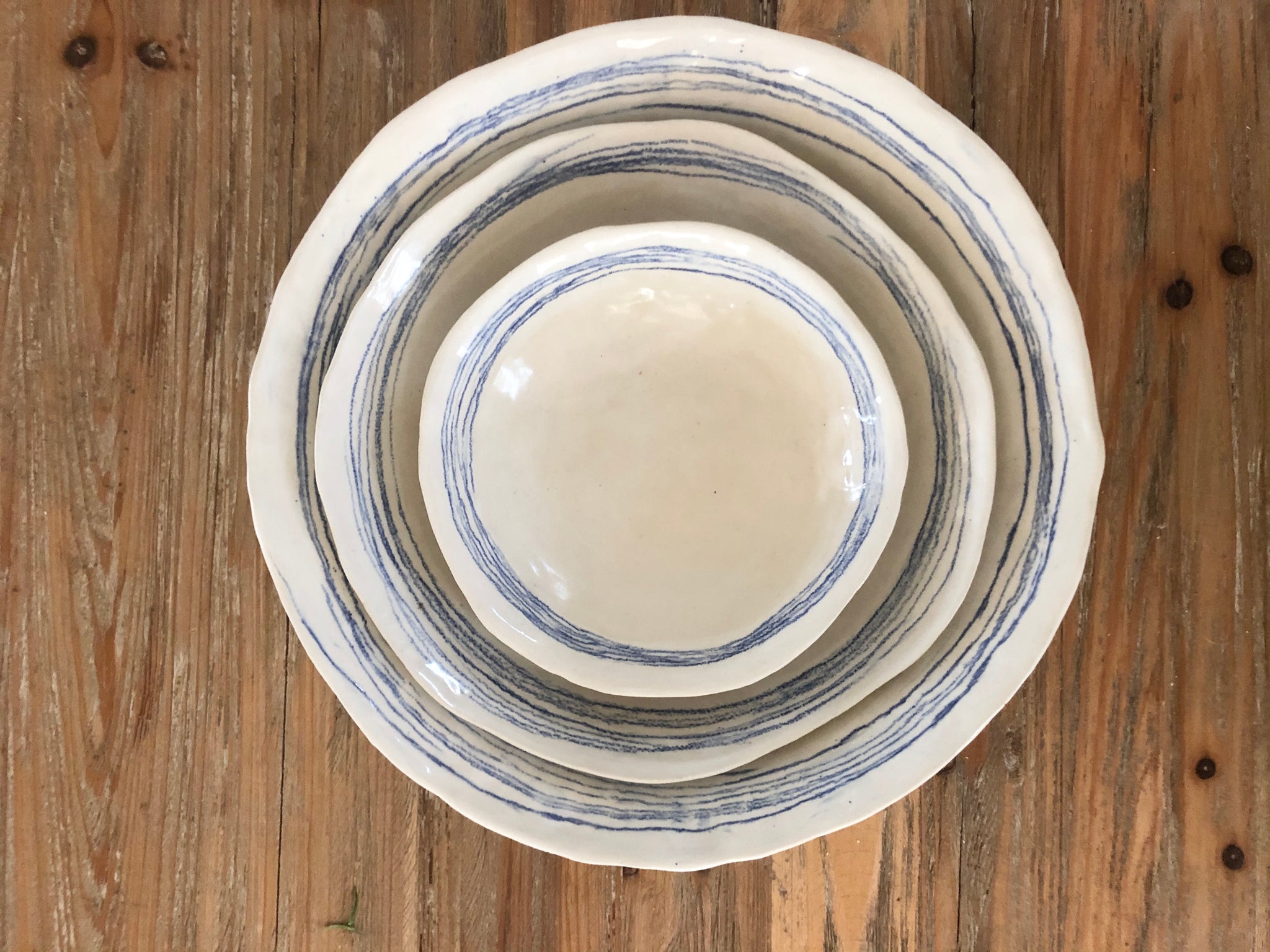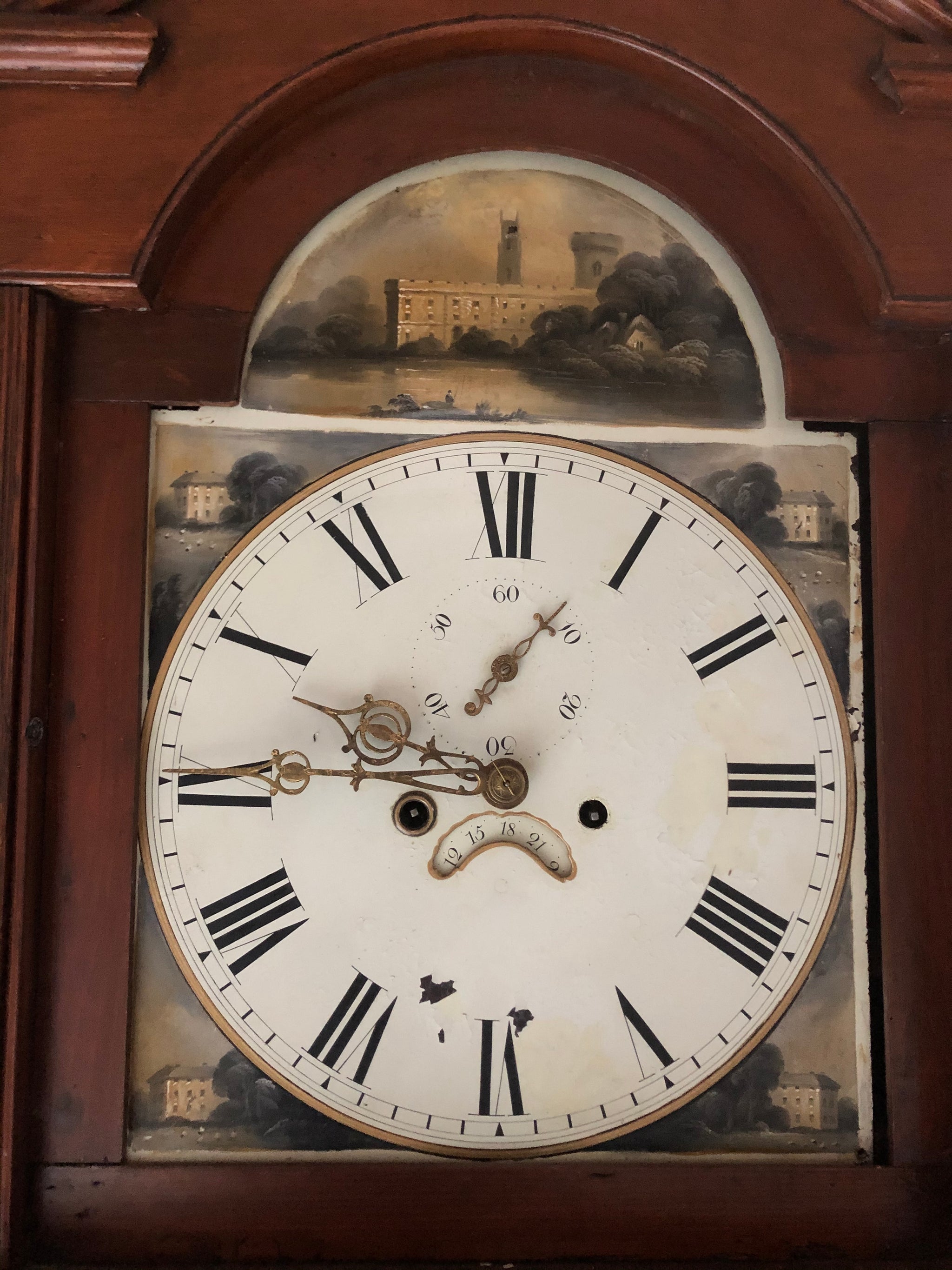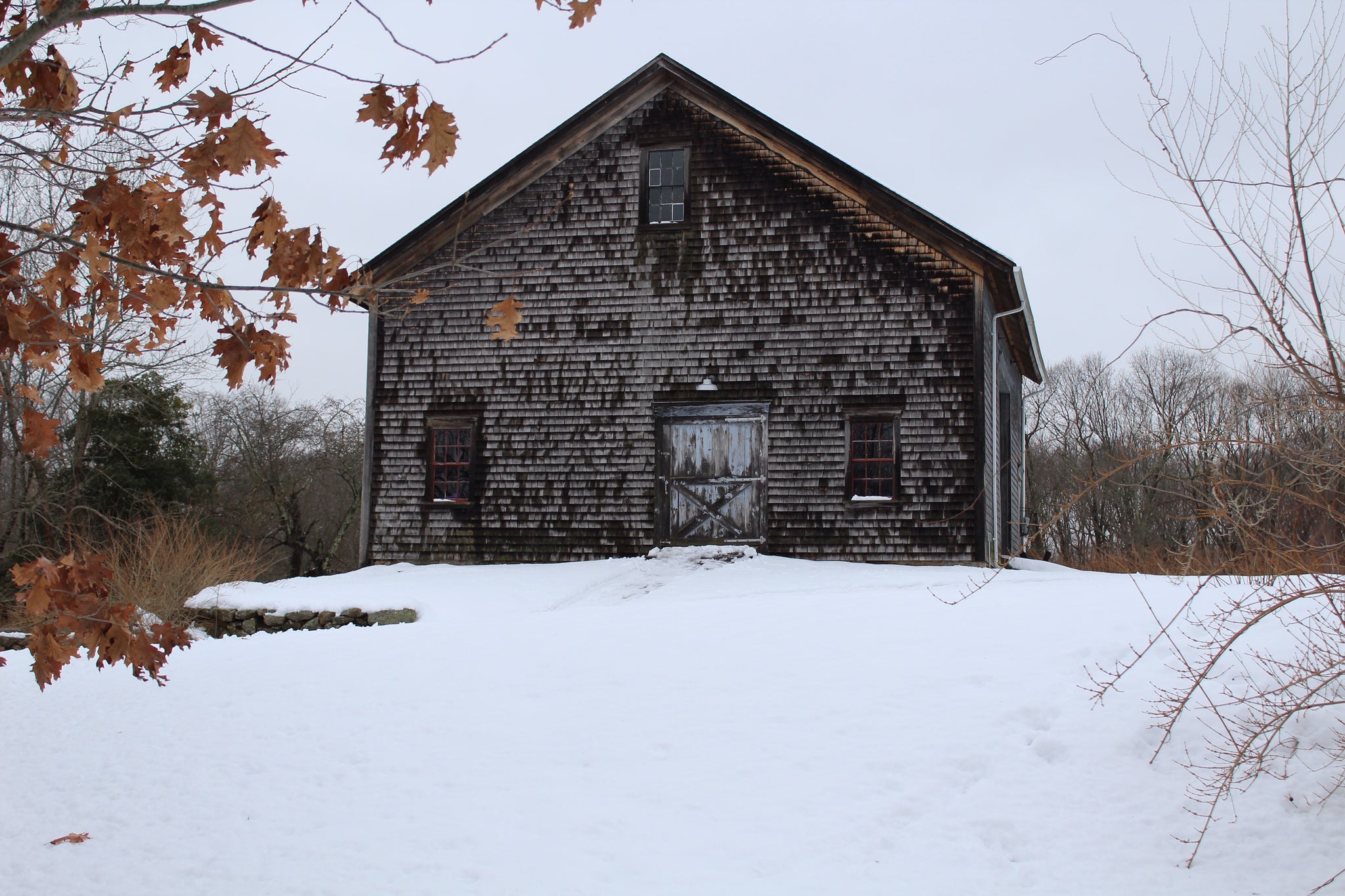Finding Vintage with Ryan Townsend: Artist, Maker, Explorer, Visual Arts Educator
Ryan Townsend is an art maker and art educator, based North of Boston. With a B.A. in Studio Art & Anthropology and a Masters in Art Education, his art explorations involve practices and materials such as clay, watercolors, acrylics, sculpture and installation. Ryan's work aesthetic is often a mix of minimal and organic, and he is influenced by a combination of traditional and contemporary approaches. His art as well as his art education practices incorporate various references to culture, traditions, and cultural meaning-making through artful objects.
There's the bio now meet Ryan IRL (in real life if you're new to the world). Ryan and I met many years ago in of all places Anthropology. I was shopping and he was employed there. I picked up a hand crafted crab from a display table and asked Ryan the price. He responded with something to the effect of - those actually aren't for sale. I made them for the display but I'm happy to tell you how to do it. What's not unusual is the fact that I picked up a piece of a display and wanted to buy it. What is unusual is that Ryan was so forthcoming about wanting to share his idea and creativity. At that point in time Ryan had graduated with a college degree, was getting his masters in art and was working at Anthropology as a side gig. A couple of years ago I reached back out to Ryan to see what he was up to and found that along with teaching he was still creating. Since then Ryan and I have worked together on several projects and I have been lucky to be able to represent some of his work at Water and Main.
My conversation with Ryan:
I know from being creative myself sometimes it's hard for me to stay with one thing. For you, how did you choose ceramics. Were there other mediums that you were also interested in?
My appreciation for clay and ceramics first emerged in my high school art classes. When first deciding on what to concentrate on during undergrad, my mind was focused on painting & drawing actually and not ceramics at all. I took a bunch of 2-dimensional based studio courses-- Painting with acrylics, painting with oils, printmaking, letterpress, drawing. It was only in the last 2 years of college that I picked up ceramics again (after some time away studying abroad) which probably speaks to the fact that it really is also hard for me to stick with one thing. However, there are so many contemporary artists now who incorporate such variety and mixtures of mediums into their work, so overall I'm seeing it as a wonderful thing. I love playing with different mediums, materials and techniques and often like to overlap/incorporate mixed media into what I make. With ceramics, I started to realize that you can transfer those 2-D skills into the 3-D surface treatments, with glazes and underglazes, and so it is a really satisfying way to combine those dimensions of art making.
You teach high schoolers. Why teaching? Is it hard to get kids excited about art and art forms or do you find kids are excited to learn?
I teach at a public high school. This year, I teach all of the 3D Studio Art, Ceramics, and Photography classes. So, in this sense it's lucky to not be able to focus on just one thing in my art practice! I went to Massachusetts College of Art & Design for my Masters in Teaching Art between 2017 and 2018, but really have been interested in being a teacher since high school, partly because I was inspired by my own art teacher who was so nurturing and loving, and partly because it's often just so fun to be in a classroom facilitating art-making. I love to see young adults having artistic revelations or suddenly finding joy and excitement in making because I know what it means to me and how much it can help you look into yourself, promote self-growth, and see things differently than before. The challenge of the art teacher is to help every one of your students find access points for making art and finding their own artistic direction/style. Some students are always going to be more willing than others to get in to it. The craft of teaching often lies in the tailoring of your curriculum to the needs and interests of your students at any given point in the year, so that you can maximize that excitement within them.
What are you excited about in the world of creating right now. Not about trends or what people in the industry are saying, I mean what do you want to create next or want to learn?
Though I have taught photography for the last two years, transparently, I don't actually have much of a background in it so my biggest goal right now is to keep gathering knowledge and mastering the art of photo. I got back into the darkroom process last year and that turned out to be more enjoyable than I anticipated. I hadn't done any darkroom since high school so I loved relearning about the technical aspects of it. With digital photography, I have been experimenting a bit with color play, multiple exposure layering, and post shoot editing and I am excited about those explorations. On the horizon I also am looking forward to pushing my ceramic forms in new directions, bringing back more of my 2-d painting process, and hopefully getting into UX design as well.
Is there someone in the world of art that inspired you to focus on art or was it just something you fell into?
Looking back at the trajectory, initially it was probably my mom, and other family members as a kid. Then, it was most definitely my art teachers in high school, followed by my professors and creative friends/peers in college. After that, it was my grandparents in a big way who helped me dive into clay a bit more intimately as an emerging adult trying to figure out how to really start life. Finally, there are all the random valuable humans who are so important in different ways that come in and go out of your life at certain points, even if just for a moment, who push you or make you feel special in just the right ways so that you keep making art.
What's the real advice for makers who might be working at a store as a side hustle but are interested in pursuing a career in art?
It's hard work, and often so personal/emotional and I don't have a very clear answer. I do recall my ceramics professor saying to us that if we had the passion and desire to be artists in this world that we would need to get used to working double, and having 2 full-time jobs, at least for some period of time. You must have the energy and drive to make it happen, which is cliche and true. Simultaneously, you need to recognize that everyone's art journey is very different and each flows in organic, non-linear ways. Sometimes you might have many weeks or months of not creating. Be kind to yourself and respect yourself and pick back up as soon as you feel an ounce of inspiration. It really depends on what you need to prioritize in your life. For me right now, teaching is my full time priority and creating/making currently is very much a part-time side focus, and that's just the reality of it. Summer time flexibility will allow me to be more active in my making, and this is the cycle with many public school art educators. Just keep making whenever you can/however you can, network with other creatives and supporters of the arts, and promote yourself especially now through virtual means. Eventually, people will pick up on and appreciate your work and USE THAT as momentum to keep going.
@ryanpatrickt





